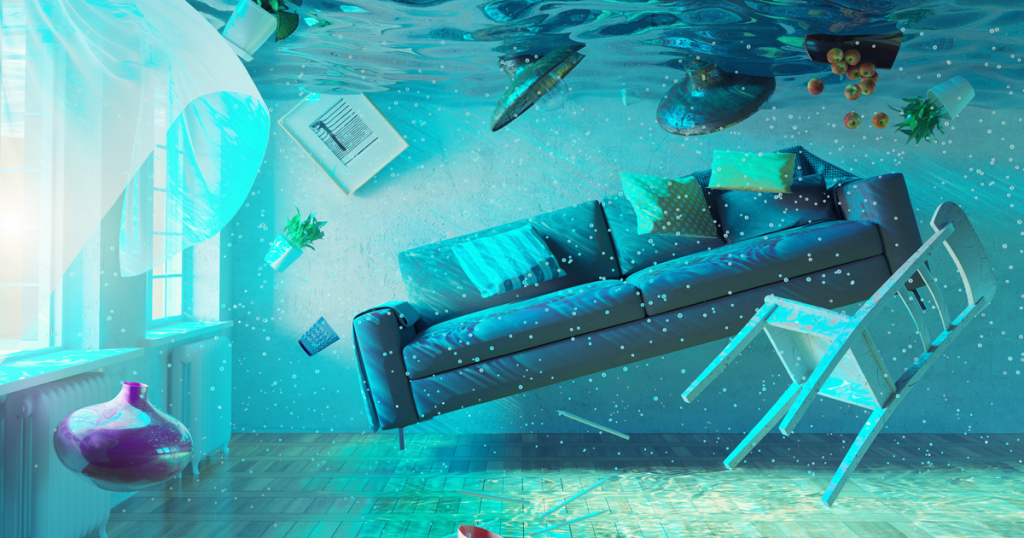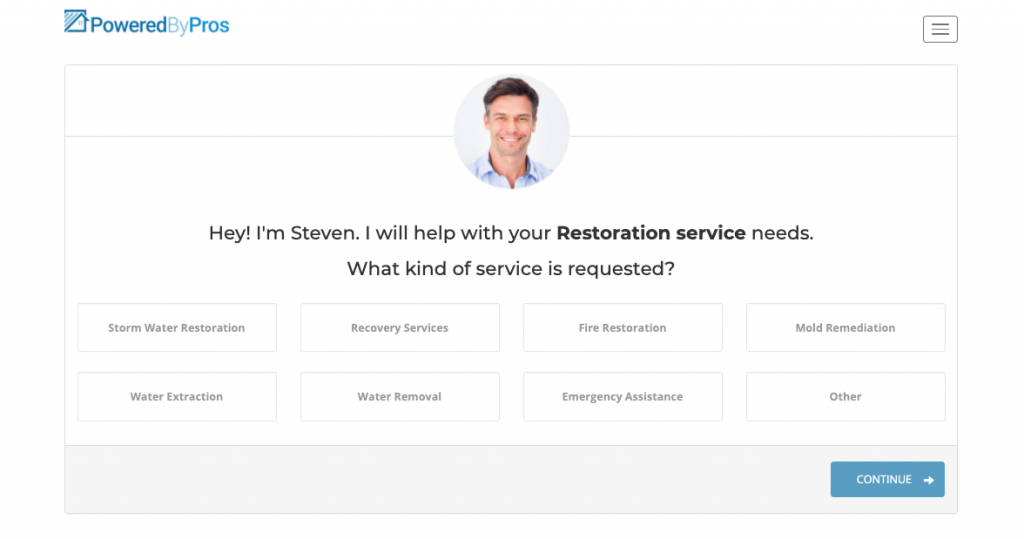
There are two words homeowners rarely ever want to hear: water damage. Unfortunately, flooding, bursted pipes, and mold damage from leaky plumbing is a common life reality. Did you know that, according to the Federal Emergency Management Agency (FEMA), flooding is the most common natural disaster that affects homeowners? For this reason, water damage is also one of the most frequent insurance claims filed each year. Although it can seem like a dead-end when you are standing ankle-deep in water, just know that there are professionals in your area who are standing by with years of experience to transform your home back into a beautiful and healthy living space. This article will explain the three different water damage types and guide you in how to deal with them.
HEALTH DANGERS OF WATER DAMAGE
The appropriate steps taken to solve minor or major water damages mainly depend on the amount of water and the type of water you are dealing with. Standing water creates many issues—the most immediate being structural damage to your home. However, even if there is not enough flooding to knock down walls, the water that usually results from flooding is dirty and filled with the right amount of germs and dirt to create serious mold and dust-mite issues. This means that if you have any type of allergy, you’ll be at high risk of developing more serious problems. The same goes for if you suffer from asthma—mold can only make your symptoms worse. You need to get water damage under control as soon as possible, as it only takes about 48 hours for mold to begin rapidly growing. Mold, if left untreated, can also cause respiratory infections and fungal infections. For these reasons, it is imperative to hire a water damage professional quickly to ensure that you and your family stay healthy.
- icon
Category I (Clean Water)
Clean water floods can result from malfunctioning appliances, toilet holding tanks, and melting snow and rainwater. Clean water residential floods are generally safe for you to clean up yourself, as the water poses no immediate risk to your health. But remember, time is of the essence! Standing water can quickly develop into category II, as there will most likely be dirt and debris in the water, which creates perfect conditions for bacterial growth.
- icon
Category II (Grey Water)
Sometimes called sullage, grey-water refers to wastewater that is not contaminated with fecal matter. This water contains fewer pathogens than black water but more than clean water. Greywater can be recycled water or water that is not filtered to the same degree as drinking water (aka potable water). Grey-water floods can be caused by a weather event, an overflowing plumbing fixture, or even a broken pipe. At this point, strongly consider hiring a pro and make sure to act quickly as category II water will develop into black water.
- icon
Category III (Black Water)
Black-water refers to wastewater contaminated with human waste, food waste, pathogens, toxins, and excessive amounts of dirt or debris. This is essentially sewage-grade water that results from major flooding events caused by hurricane-strength events. Black-water is the most dangerous type and can only be appropriately resolved by hiring a professional water damage specialist.

STEPS TO FOLLOWDEALING WITH RESIDENTIAL WATER DAMAGE
From storm floods to leaky faucets, water damage is a severe problem resulting in significant health impacts and safety issues. If you have recently experienced water damage, you can take steps to minimize the damage and ensure the protection of valuables. Follow these steps and suggestions below to reduce the chance of mold accumulation and structural integrity issues.
STEP #1STOP THE WATER
Immediately once you discover water damage, you need to halt the flow of water. Be sure the first thing you do is stop the flow of water. For this, you will need to shut down the main water line of your home. Suppose you have experienced flooding due to a heavy storm or other natural events. In that case, the problem may be too large to take on yourself. At this point, we recommend calling your emergency service hotline and getting in contact with a water damage pro immediately.
STEP #2SHUT DOWN THE POWER
If your home is flooded, cut off the electricity and gas from the primary source. There are obvious reasons why you do not want an electric current running through standing water. This isn’t really necessary for small leaks or puddles, but for large floods, turn them off to be safe. If you have to stand in water to disconnect the power, then contact a certified electrician
STEP #3ASSESS THE DAMAGE
Make sure to look around your entire home and write down which areas of your home have been impacted, do this for your interior and exterior. Take ample pictures to give to your water damage expert and insurance agency if the damage is so bad that it requires a claim. Taking pictures and notes will supply those who assist you to expedite the repair process.
STEP #4SAVE YOUR VALUABLES
Save your valuables. If the amount of flooding does not impede your safety, rescue your prized possessions. Act quickly and put these items in a safe, dry place. The longer you let water stand, the more damage will occur.
STEP #5REMOVE THE WATER
When the active flooding has subsided, then it is time to start the repair process. Purchase a pump, grab boots, put on gloves, water-resistant clothing, and wear a mask. Ensure that pets and children are in a safe area; flooded water is often contaminated with harmful germs. Put your pump at the lowest point in the room. If dealing with a small amount of flooding, you may be able to use a wet-dry shop vacuum to remove the water.
STEP #6CLEAN UP DEBRIS
Once the water has dissipated, begin to shovel out excess mud and debris out of your home. Check for dirt in air ducts too. This debris is filthy and filled with toxins, so it is imperative to remove it quickly and dispose of it well. Watch out for nails and sharp objects that could be covered up by mud.
STEP #7DRY AND DEHUMIDIFY
Dry and dehumidify. You need to let everything in your household dry. Do not power up your appliances until you have given them an ample amount of time to dry. Consider purchasing a dehumidifier to reduce moisture in affected rooms.
FIND A Water damage PRO FOR FREE
With so many water damage professionals to choose from, it might seem overwhelming having to do all of the time-consuming research and then deciding which one to hire to accomplish your goal. Finding the perfect water damage contractor for your need usually involves several steps and will take up a tremendous amount of your time. Quality research outcomes are dependent on how much time you actually have. A digital home services marketplace and free service like PoweredByPros is a great way to get the job done without cutting into any of your free time.

PoweredByPros matches homeowners with screened service professionals they can trust to successfully complete any type of home improvement, maintenance, and repair project. PoweredByPro’s mission is to connect our homeowner customers with service professionals they can trust and provide them with the best home improvement experience. And believe it or not – it’s free to get a quote!